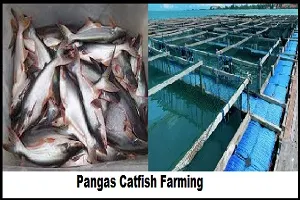The Pangas catfish, scientifically known as Pangasius bocourti, is an intriguing aquatic species that has gained recognition in the aquaculture industry. Originating from Southeast Asia, particularly from the Mekong River basin, this catfish species has garnered attention for its adaptability, fast growth rate, and delicious flesh. Here's an insightful look into the Pangas catfish:
Origin and Habitat
The Pangas catfish is native to the freshwater ecosystems of Southeast Asia, predominantly found in the Mekong River and its tributaries. These rivers provide an ideal habitat for the Pangas catfish, characterized by slow-flowing waters with muddy or sandy bottoms. However, due to its popularity in aquaculture, Pangas catfish are now farmed in various countries across the globe, including Vietnam, Thailand, and Bangladesh.
Physical Characteristics
Pangas catfish typically have a streamlined body with a silver-gray coloration and a white belly. They possess a pair of long barbels around their mouths, which they use to detect food in their surroundings. These catfish can grow to considerable sizes, with adults reaching lengths of up to 1.5 meters (5 feet) and weights of over 40 kilograms (88 pounds).
Aquaculture Importance
One of the key factors driving the popularity of Pangas catfish is their suitability for aquaculture. They are known for their rapid growth rate, reaching market size within a relatively short period. Additionally, Pangas catfish are resilient to various environmental conditions and exhibit efficient feed conversion ratios, making them cost-effective to rear in aquaculture systems.
Culinary Delights
The Pangas catfish is prized for its firm, white flesh and mild flavor, making it a versatile ingredient in various culinary dishes. Whether grilled, fried, baked, or steamed, Pangas catfish can be prepared in numerous ways to suit different tastes and preferences. Its affordability and availability have also contributed to its popularity among consumers worldwide.
Sustainable Practices
As with any aquaculture venture, ensuring the sustainability of Pangas catfish farming is paramount. Responsible aquaculture practices, such as proper waste management, regular monitoring of water quality, and the use of sustainable feed sources, are essential for minimizing environmental impacts. Furthermore, adherence to certification standards, such as those provided by the Aquaculture Stewardship Council (ASC), can help promote transparency and accountability within the industry.
Complete Guide to Pangas Catfish Farming
Pangas Catfish (Pangasius bocourti) is an intriguing freshwater species known for its fast growth rate and high commercial value. Here's a step-by-step guide to effectively cultivate Pangas Catfish:
1. Site Selection and Pond Preparation
- Choose a location with clean water, free from pollution, and adequate sunlight exposure.
- Ponds should be of sufficient size, with a minimum depth of 1.5 meters, and good drainage systems.
2. Seed Selection
- Obtain Pangas Catfish fingerlings from reputable hatcheries with a track record of quality and health.
- Ensure uniform size and condition of fingerlings to minimize competition and stress.
3. Water Management
- Regularly monitor water quality parameters, including temperature, pH, dissolved oxygen, and ammonia.
- Conduct periodic water exchange to maintain optimal water quality.
4. Feeding Management
- Provide high-quality feed rich in protein in sufficient quantities to meet the fish's growth requirements.
- Establish a regular feeding schedule, ideally 2-3 times a day, with appropriate feed amounts.
5. Disease Control and Health Management
- Implement strict biosecurity protocols to prevent the introduction of diseases into the fishpond.
- Monitor for signs of disease and take appropriate preventive measures such as vaccination or treatment.
6. Pond Maintenance
- Clean ponds regularly to prevent the accumulation of organic waste and sediment deposition.
- Repair or replace aquaculture equipment that is damaged or worn out regularly.
7. Harvesting and Post-Harvest
- Determine the optimal harvest time based on desired fish size and market readiness.
- After harvesting, process the fish properly to maintain product quality and safety.
8. Marketing and Distribution
- Develop effective marketing strategies to promote your Pangas Catfish products to potential consumers.
- Establish partnerships with local traders, restaurants, or wholesale markets to expand your market reach.
9. Evaluation and Development
- Regularly evaluate the performance of your fish farming operation and identify areas for improvement or refinement.
- Stay informed and keep abreast of the latest developments in fish farming technology and practices.
By following this comprehensive guide and adopting good aquaculture practices, you can start and manage a successful Pangas Catfish farming venture. With a commitment to quality, sustainability, and innovation, Pangas Catfish farming has the potential to yield significant profits in the freshwater fisheries industry.
Conclusion
The Pangas catfish stands out as a remarkable species with significant importance in both natural ecosystems and aquaculture settings. Its adaptability, fast growth rate, and culinary appeal have cemented its status as a valuable asset in the world of aquaculture. By embracing sustainable practices and responsible management techniques, we can ensure the continued success and conservation of this unique aquatic species for generations to come.







0 Komentar